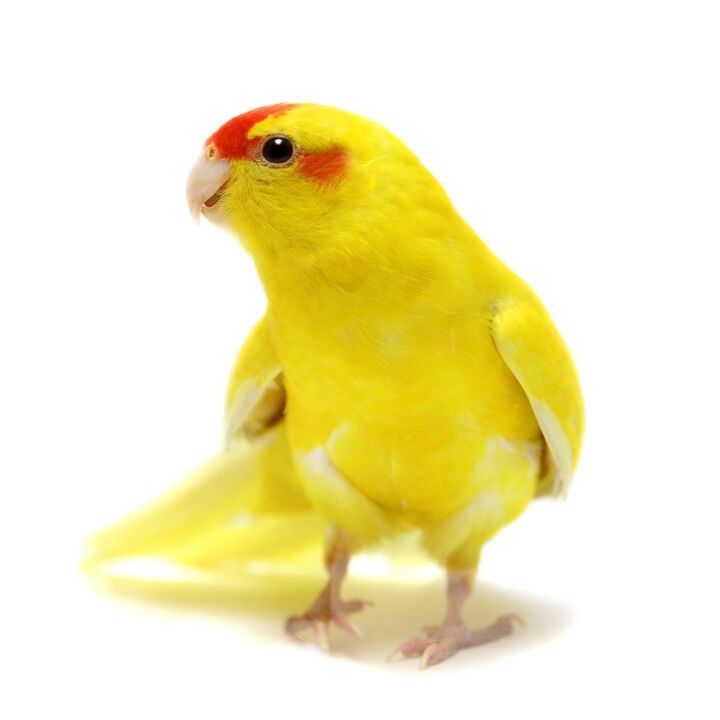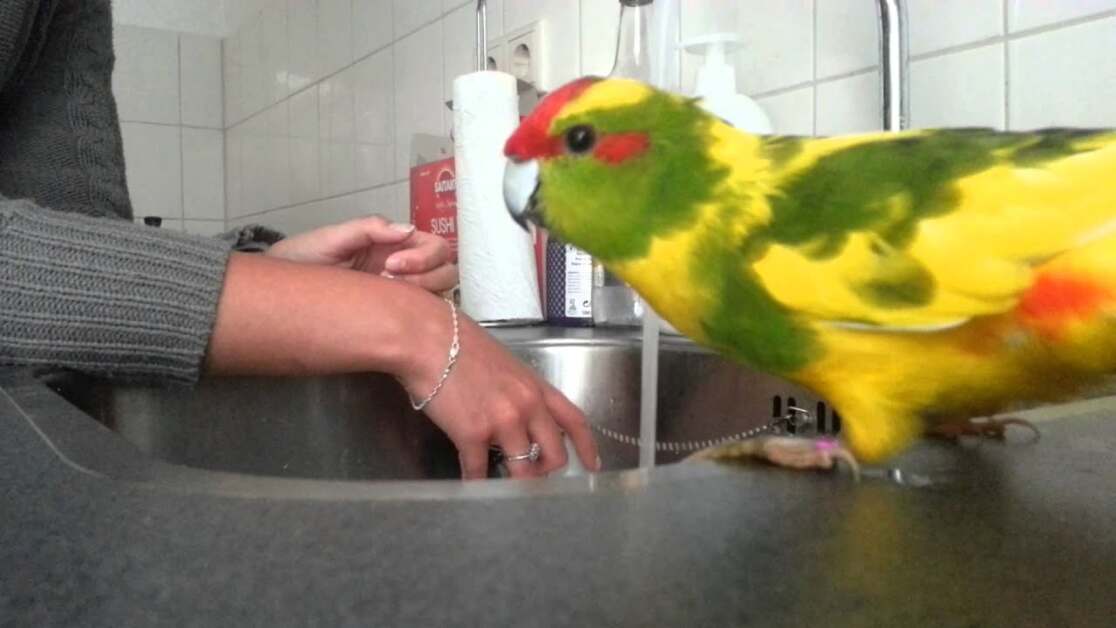Can Kakariki Parrots Talk? Unveiling Their Surprising Abilities
Yes, Kakariki parrots can talk. They can mimic sounds and words.
However, they are not known for being the best talkers among parrots. Kakariki parrots, also known as New Zealand parakeets, are colorful and lively birds. They are known for their playful nature and energetic behavior. While they may not have the talking ability of some larger parrots, they can still learn a few words and phrases.
These birds are intelligent and curious, often mimicking sounds they hear in their environment. If you are patient and consistent, you may be able to teach your Kakariki parrot to speak. In this blog, we will explore the talking abilities of Kakariki parrots and share tips on how to encourage their speech.

Credit: en.wikipedia.org
Introduction To Kakariki Parrots
Kakariki Parrots are charming birds known for their vibrant colors and lively nature. They are small to medium-sized parrots with a playful temperament. Many bird lovers enjoy them for their unique characteristics and friendly behavior.
Origins And Habitat
Kakariki Parrots originate from New Zealand. Their name, “Kakariki,” means “small parrot” in the Maori language. These birds are found in various habitats including forests, scrublands, and coastal areas.
They adapt well to different environments. Their natural habitat provides plenty of food and shelter. Kakariki Parrots thrive in the wild, feeding on seeds, fruits, and small insects. They are also known to forage on the ground for food.
Unique Characteristics
Kakariki Parrots are known for their bright green feathers. They have a distinctive red patch on their forehead, which makes them easily recognizable. These birds are also quite energetic and love to explore their surroundings.
They are excellent flyers, often seen darting through the trees with agility. Kakariki Parrots are also known for their vocal abilities. While they may not have a wide vocabulary like some parrots, they can mimic sounds and words.
Here are some unique characteristics of Kakariki Parrots:
- Coloration: Bright green feathers with red or yellow markings.
- Size: Small to medium, typically 25-27 cm in length.
- Behavior: Playful, curious, and energetic.
- Vocalization: Capable of mimicking sounds and simple words.
Kakariki Parrots are fascinating birds with a lot to offer. Their unique traits make them a joy to observe and interact with. Understanding their origins and characteristics helps in appreciating these delightful creatures even more.

Credit: www.petguide.com
Communication In Parrots
Parrots are known for their ability to mimic sounds. This includes human speech. Their communication skills are fascinating. They use a variety of sounds to express themselves. Understanding these sounds can help us know our feathered friends better.
Vocalization Vs. Talking
Vocalization refers to the natural sounds that parrots make. These sounds can include squawks, chirps, and whistles. They use these sounds to communicate with their flock.
Talking in parrots means mimicking human speech. Not all parrots can talk. Some species are better at it than others. For example, African Grey Parrots are excellent talkers. Kakariki parrots, on the other hand, are less known for their talking abilities.
Factors Influencing Parrot Speech
| Factor | Impact |
|---|---|
| Species | Some species are more talkative. |
| Age | Younger parrots learn faster. |
| Environment | A stimulating environment encourages speech. |
| Training | Consistent training improves talking skills. |
| Bond with Owner | A strong bond enhances communication. |
Species play a crucial role. Not all parrots are great talkers. Younger parrots are more adaptable to learning new sounds. They pick up words faster.
A stimulating environment is key. Parrots need to hear a lot of words. Talking to them regularly helps. Consistent training also improves their talking abilities. Patience is vital here.
A strong bond with the owner can boost a parrot’s willingness to talk. When they feel safe and loved, they are more likely to mimic speech.
Kakariki Parrots’ Vocal Abilities
Kakariki parrots can mimic human speech and other sounds. Their vocal abilities make them entertaining pets. These parrots enjoy chattering and can learn a few words or phrases with consistent training.
Kakariki parrots are known for their lively and playful nature. They are not just visually appealing with their bright colors. They also have interesting vocal abilities. These parrots can produce a variety of sounds. Their vocal skills make them fascinating pets.Common Sounds And Calls
Kakariki parrots produce different sounds. They often chirp and chatter throughout the day. These sounds can be loud and energetic. They also make softer, more soothing calls. Each call can mean something different. Some sounds signal happiness. Others might indicate curiosity or alertness.Mimicry Skills
Kakariki parrots can mimic sounds they hear. This includes human speech. They might not be as skilled as other parrots. But they can learn a few words and phrases. They often repeat sounds they find interesting. This makes them fun and interactive pets. Their mimicry skills add to their charm. “`Training Kakariki Parrots To Talk
Training Kakariki parrots to talk can be a fun and rewarding experience. These charming birds are known for their intelligence and playful nature. With patience and consistency, you can teach your Kakariki parrot to mimic words and sounds. In this section, we will explore effective methods to train your feathered friend to talk.
Starting With Basic Words
Begin with simple, clear words. Words like “hello,” “bye,” or their name work well. Repeat these words often in a calm and friendly tone. Your parrot will start to recognize and mimic the sounds. Keep sessions short, around 10-15 minutes, to maintain their interest.
Positive Reinforcement Techniques
Positive reinforcement is key to successful training. Reward your Kakariki parrot with treats and praise. Every time they attempt to speak, give them a small treat. This encourages them to keep trying. Use a consistent reward to create a strong association.
Be patient and consistent. Your parrot will learn at their own pace. Celebrate small progress to keep the experience enjoyable for both you and your parrot.
Comparing Kakariki Parrots With Other Talking Parrots
Kakariki parrots are charming and curious birds. They are known for their playful nature. But how do they compare with other talking parrots? Let’s explore and understand their talking abilities in comparison to some popular talking parrots.
African Grey Parrots
African Grey Parrots are famous for their talking abilities. They can mimic human speech very well. In fact, they are considered the best talking parrots. They have large vocabularies and can even understand context.
Kakariki parrots, on the other hand, have limited talking skills. They can learn a few words and sounds. But their vocabulary is not as extensive as African Greys. If you want a bird mainly for talking, African Greys are a better choice.
| Feature | African Grey Parrots | Kakariki Parrots |
|---|---|---|
| Talking Ability | Excellent | Limited |
| Vocabulary Size | Large | Small |
Budgerigars
Budgerigars, also known as budgies, are small but talented talkers. They can learn many words and sounds. Their voices are high-pitched but clear. Budgies are popular for their talking abilities despite their size.
Compared to budgerigars, Kakariki parrots may not impress with their talking skills. They can mimic simple sounds and a few words. But they are not as talkative or clear as budgies. If you want a smaller bird with good talking skills, budgerigars are an excellent option.
| Feature | Budgerigars | Kakariki Parrots |
|---|---|---|
| Talking Ability | Good | Limited |
| Voice Clarity | Clear | Less Clear |
Challenges In Teaching Kakariki Parrots To Talk
Teaching Kakariki parrots to talk presents unique challenges. These small, lively birds are known for their playful nature. Yet, getting them to speak can be a tough task. Patience and consistency play crucial roles in this process. Additionally, individual differences among Kakarikis can impact their learning ability.
Patience And Consistency
Training Kakariki parrots requires patience. They might not pick up words quickly. Consistent practice sessions are essential. Repeating words daily helps in reinforcing learning. Short, frequent sessions work best. Overly long sessions can make the bird tired. Keep the environment calm and free from distractions.
Individual Differences
Not all Kakariki parrots have the same learning ability. Some may start mimicking sounds early. Others might take months to utter a word. Recognize these differences. Each bird has its own pace. Some Kakarikis might never talk. Understanding and accepting this is vital. Celebrate small progress and encourage your bird.
Success Stories Of Talking Kakariki Parrots
Many bird enthusiasts wonder if Kakariki parrots can talk. While they are not as famous as some other parrots for their speaking abilities, there are success stories. These stories show that Kakariki parrots can indeed learn to talk. With patience and training, owners have reported their Kakarikis speaking words and phrases.
Notable Examples
One well-known Kakariki parrot named Kiwi has amazed many. Kiwi can say over 20 words and phrases. Kiwi’s owner started training early, using repetition and rewards. This method proved effective. Another Kakariki, named Sunny, also learned to speak. Sunny’s favorite words include “hello” and “good bird.” Both examples show that Kakarikis can learn to talk with the right approach.
Lessons Learned
Training a Kakariki to talk requires patience. Start with simple words. Repeat them often. Use positive reinforcement, like treats and praise. Consistency is key. Owners need to spend time daily practicing words. It’s also important to create a quiet environment. This helps the bird focus on learning. Keep training sessions short and fun. This keeps the bird engaged and interested.

Credit: en.wikipedia.org
Frequently Asked Questions
Can Kakariki Parrots Mimic Human Speech?
Yes, Kakariki parrots can mimic human speech. They are capable of learning a few words and sounds. However, their talking ability is not as advanced as some other parrot species.
How Do Kakariki Parrots Communicate?
Kakariki parrots communicate through a variety of sounds and body language. They use chirps, whistles, and squawks to express themselves. Observing their behavior can help understand their communication.
Are Kakariki Parrots Good Pets For Beginners?
Yes, Kakariki parrots are good pets for beginners. They are friendly, active, and relatively easy to care for. Their social nature makes them enjoyable companions.
How To Train Kakariki Parrots To Talk?
Start by spending time with your Kakariki parrot daily. Repeat simple words and phrases consistently. Use positive reinforcement like treats and praise to encourage them.
Conclusion
Kakariki parrots can learn to talk with proper training and patience. Their speech is often clear and amusing. These parrots enjoy interaction and mimicry. Regular practice helps in improving their talking ability. Owners need to be consistent and encouraging. Teaching a Kakariki to talk can be a fun experience.
It strengthens the bond between the bird and its owner. So, with some effort, your Kakariki can become a charming little talker. Enjoy the journey of training your feathered friend.
Hello Dear, I'm Poli Kolymnia, owner of many birds (including budgies).
With a deep passion for these feathered companions, I'm here to share my expertise and extensive knowledge on birds care.
My articles cover essential topics like diet, housing, care, and health, providing practical tips to help you create a happy and thriving environment for your birds.




